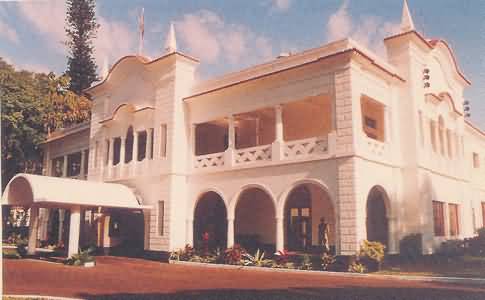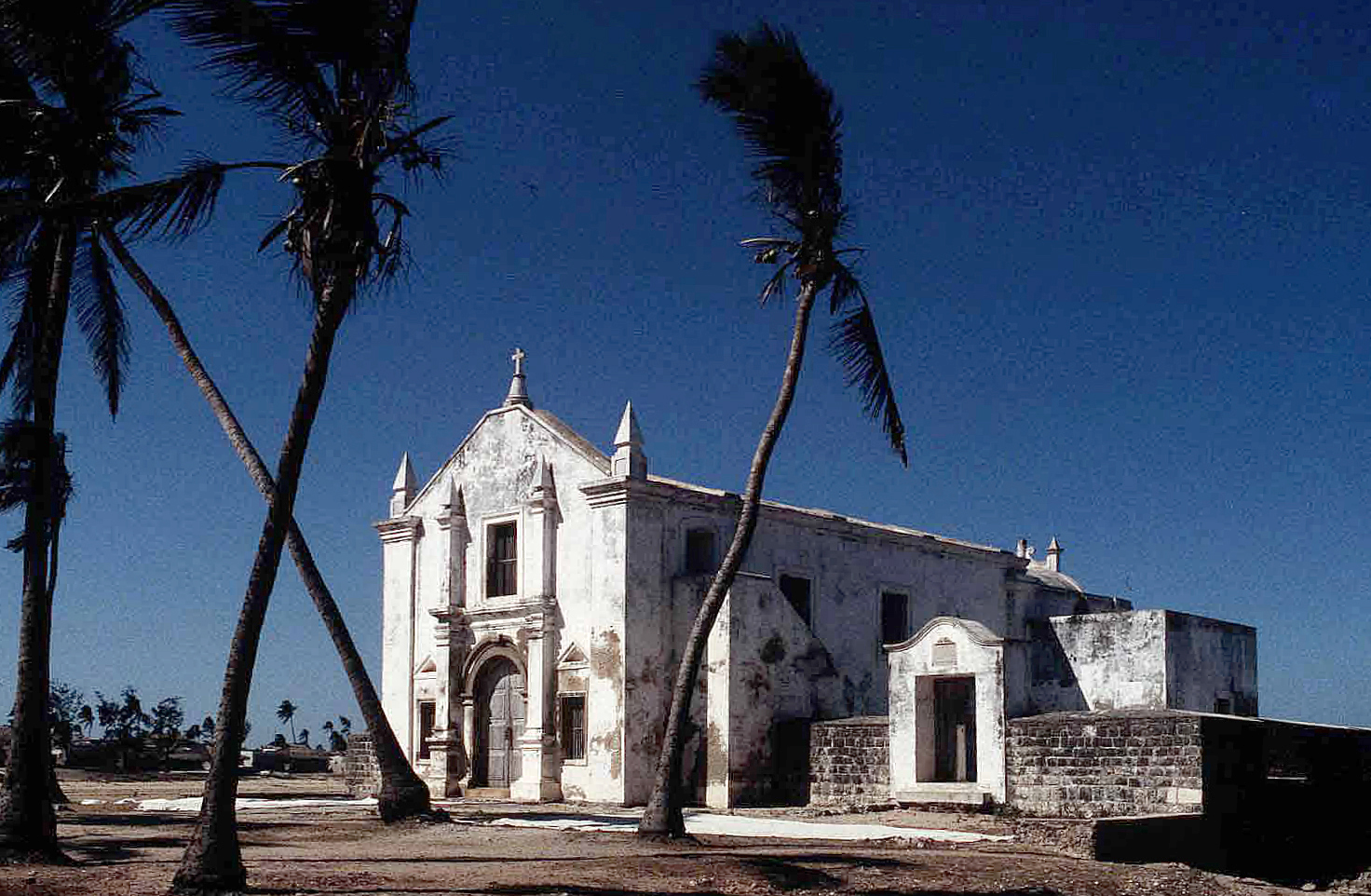|
Cultural Properties Of Mozambique
The Cultural Properties of Mozambique are protected and promoted in accordance with Law 10/88 of 1988 concerning tangible and Intangible cultural heritage, intangible properties relating to the cultural heritage of Mozambique (''bens materiais e imateriais do património cultural moçambicano''). Article 3 defines eight classes of movable cultural properties and four classes of immovable cultural properties: monuments (''monumentos''), groups of buildings (''conjuntos os grupos de edifícios''), sites (''locais ou sitios''), and natural elements (''elementos naturais''); those classed as ''património cultural'' are of exceptional Values (heritage), significance and are afforded special state protection. Cultural Patrimony Cultural properties classed as ''património cultural'' include the following: See also * History of Mozambique * Culture of Mozambique * List of heritage registers * General History of Africa, UNESCO General History of Africa References External links *Sele ... [...More Info...] [...Related Items...] OR: [Wikipedia] [Google] [Baidu] |
Intangible Cultural Heritage
An intangible cultural heritage (ICH) is a practice, representation, expression, knowledge, or skill considered by UNESCO to be part of a place's cultural heritage. Buildings, historic places, monuments, and artifacts are cultural property. Intangible heritage consists of nonphysical intellectual wealth, such as folklore, customs, beliefs, traditions, knowledge, and language. Intangible cultural heritage is considered by member states of UNESCO in relation to the tangible World Heritage Site, World Heritage focusing on intangible aspects of culture. In 2001, UNESCO made a survey among States and Non-governmental organization, NGOs to try to agree on a definition, and the Convention for the Safeguarding of the Intangible Cultural Heritage was drafted in 2003 for its protection and promotion. Definition The Convention for the Safeguarding of the Intangible Cultural Heritage defines the intangible cultural heritage as the practices, representations, expressions, as well as the kn ... [...More Info...] [...Related Items...] OR: [Wikipedia] [Google] [Baidu] |
Gungunhana
Ngungunyane, also known as Mdungazwe Ngungunyane Nxumalo, N'gungunhana, or Gungunhana Reinaldo Frederico Gungunhana, (c. 1850 – 23 December 1906) was a tribal king and vassal of the Portuguese Empire, who rebelled, was defeated by General Joaquim Mouzinho de Albuquerque and lived out the rest of his life in exile, first in Lisbon, but later on the island of Terceira, in the Azores. Gungunhana was the last dynastic emperor of the Empire of Gaza, a territory now part of Mozambique. Nicknamed the ''Lion of Gaza'', he reigned from around 1884 to 28 December 1895, the day he was imprisoned by Joaquim Mouzinho de Albuquerque in the fortified village of Chaimite. Because he was already known to the European press, the Portuguese colonial administration decided to exile him, rather than send him to face a firing squad, as would normally be the case. He was transported to Lisbon, accompanied by his son Godide and other dignitaries. After a brief stay at the Fort of Monsanto, he was ... [...More Info...] [...Related Items...] OR: [Wikipedia] [Google] [Baidu] |
List Of Heritage Registers
This list is of heritage registers, inventories of cultural properties, natural and man-made, tangible and intangible, movable and immovable, that are deemed to be of sufficient heritage value to be separately identified and recorded. In many instances the pages linked below have as their primary focus the registered assets rather than the registers themselves. Where a particular article or set of articles on a foreign-language Wikipedia provides fuller coverage, a link is provided. International *World Heritage Sites (see Lists of World Heritage Sites) – UNESCO, advised by the International Council on Monuments and Sites *Representative list of the Intangible Cultural Heritage of Humanity (UNESCO) *Memory of the World Programme (UNESCO) *Globally Important Agricultural Heritage Systems (GIAHS) – Food and Agriculture Organization *UNESCO Biosphere Reserve * European Heritage Label (EHL) are European sites which are considered milestones in the creation of Europe. At th ... [...More Info...] [...Related Items...] OR: [Wikipedia] [Google] [Baidu] |
Culture Of Mozambique
The culture of Mozambique is in large part derived from its history of Bantu, Swahili, and Portuguese rule, and has expanded since independence in 1975. The majority of its inhabitants are black Africans. Its main language is Portuguese. Its median religion is Roman Catholicism, but only about 40% of the inhabitants are Christian. It has a rich history in the areas of arts, cuisine, and entertainment. People The main ethnic groups in Mozambique are Makhuwa, Tsonga, Makonde, Shangaan, Shona, Sena, Ndau, and other indigenous groups. There are approximately 45,000 Europeans, and 15,000 South Asians. The main religious groups in Mozambique are Christian (57%), Muslim (20%), Indigenous African, and other beliefs. Health is an expansive concern in Mozambique. With limited resources and funds, the life prospects for Mozambicans are relatively low when placed in comparison to other nations, and comparable when compared to neighboring states. The infant mortality rate for 2016, has been ... [...More Info...] [...Related Items...] OR: [Wikipedia] [Google] [Baidu] |
History Of Mozambique
Mozambique was a Portuguese colony, overseas province and later a member state of Portugal. It gained independence from Portugal in 1975. Pre-colonial history Prehistoric Mozambique In 2007 Julio Mercader, of the University of Calgary, recovered dozens of 100,000-year-old stone tools from a deep limestone cave ( Ngalue) near Lake Niassa in Mozambique showing that wild sorghum, the ancestor of the chief cereal consumed today in sub-Saharan Africa for flours, bread, porridges, and alcoholic beverages, was being consumed by ''Homo sapiens'' along with African wine palm, the false banana, pigeon peas, wild oranges, and the African "potato." This is the earliest direct evidence of humans using pre-domesticated cereals anywhere in the world. The first inhabitants of what is now Mozambique were the San hunters and gatherers, ancestors of the Khoisani peoples. Between the 1st and 5th centuries AD, waves of Bantu-speaking peoples migrated from the north through the Zambezi River valley an ... [...More Info...] [...Related Items...] OR: [Wikipedia] [Google] [Baidu] |
Mozambican War Of Independence
The Mozambican War of Independence ( pt, Guerra da Independência de Moçambique, 'War of Independence of Mozambique') was an armed conflict between the guerrilla forces of the Mozambique Liberation Front or FRELIMO () and Portugal. The war officially started on September 25, 1964, and ended with a ceasefire on September 8, 1974, resulting in a negotiated independence in 1975. Portugal's wars against guerrilla fighters seeking independence in its 400-year-old African territories began in 1961 with Angola. In Mozambique, the conflict erupted in 1964 as a result of unrest and frustration amongst many indigenous Mozambican populations, who perceived foreign rule as exploitation and mistreatment, which served only to further Portuguese economic interests in the region. Many Mozambicans also resented Portugal's policies towards indigenous people, which resulted in discrimination and limited access to Portuguese-style education and skilled employment. As successful self-deter ... [...More Info...] [...Related Items...] OR: [Wikipedia] [Google] [Baidu] |
Statue Of Samora Machel
The Samora Machel Statue ( Portuguese: ''A Estátua de Samora Machel'') is a bronze sculpture located in the center of Praça da Independência in Maputo, Mozambique. The statue depicts Samora Machel (1933-1986), military, revolutionary, and the first President of Mozambique. The statue was designed and constructed in Pyongyang, North Korea by the Mansudae Overseas Projects, an arm of the Mansudae Art Studio. It stands and weighs 4.8 tons. The statue sits on a marble slab high at the head of Samora Machel Avenue, and is illuminated at night. The statue has been criticized for bearing little resemblance to Samora. The Samora Machel Statue sits in front of Maputo City Hall on the spot formerly occupied by a statue of Joaquim Augusto Mouzinho de Albuquerque, Governor-General of Portuguese Mozambique from 1896 to 1897. The statue was inaugurated on October 19, 2011, the 25th anniversary of Machel's death in an aircraft crash on the convergence of the borders of Mozambique, Swazil ... [...More Info...] [...Related Items...] OR: [Wikipedia] [Google] [Baidu] |
Mozambican Liberation Front
FRELIMO (; from the Portuguese , ) is a democratic socialist political party in Mozambique. It is the dominant party in Mozambique and has won a majority of the seats in the Assembly of the Republic in every election since the country's first multi-party election in 1994. Founded in 1962, FRELIMO began as a nationalist movement fighting for the self-determination and independence of Mozambique from Portuguese colonial rule. During its anti-colonial struggle, FRELIMO managed to maintain friendly relations with both the Soviet Union and China, and received military and economic assistance from both Moscow and Beijing. Independence was achieved in June 1975 after the Carnation Revolution in Lisbon the previous year. It formally became a political party during its 3rd Party Congress in February 1977, and adopted Marxism–Leninism as its official ideology and FRELIMO Party () as its official name. FRELIMO has ruled Mozambique since then, initially as the sole legal party in a on ... [...More Info...] [...Related Items...] OR: [Wikipedia] [Google] [Baidu] |
Eduardo Mondlane
Eduardo Chivambo Mondlane (20 June 1920 – 3 February 1969) was the President of the Mozambican Liberation Front (FRELIMO) from 1962, the year that FRELIMO was founded in Tanzania, until his assassination in 1969. Born in Mozambique, he was an anthropologist by profession, and worked as a history and sociology professor at Syracuse University before returning to Mozambique in 1963. Early life The fourth of 16 sons of a chief of the Bantu-speaking Tsonga, Mondlane was born in "N'wajahani", district of Mandlakazi in the province of Gaza," in Portuguese East Africa (Mozambique) in 1920. He worked as a shepherd until the age of 12. He attended several different primary schools before enrolling in a Swiss–Presbyterian school near Manjacaze. However, he ended his secondary education in the same organisation's church school at Lemana College at Village above Elim Hospital in the Transvaal (Limpopo Province), South Africa. He then spent one year at the Jan H. Hofmeyr Scho ... [...More Info...] [...Related Items...] OR: [Wikipedia] [Google] [Baidu] |
Paul Kruger
Stephanus Johannes Paulus Kruger (; 10 October 1825 – 14 July 1904) was a South African politician. He was one of the dominant political and military figures in 19th-century South Africa, and President of the South African Republic (or Transvaal) from 1883 to 1900. Nicknamed ''Oom Paul'' ("Uncle Paul"), he came to international prominence as the face of the Boer cause—that of the Transvaal and its neighbour the Orange Free State—against Britain during the Second Boer War of 1899–1902. He has been called a personification of Afrikanerdom, and remains a controversial figure; admirers venerate him as a tragic folk hero. Born near the eastern edge of the Cape Colony, Kruger took part in the Great Trek as a child during the late 1830s. He had almost no education apart from the Bible. A protégé of the Voortrekker leader Andries Pretorius, he witnessed the signing of the Sand River Convention with Britain in 1852 and over the next decade played a prominent role in the ... [...More Info...] [...Related Items...] OR: [Wikipedia] [Google] [Baidu] |
Maputo Central Railway Station
The Central Railway Station ( pt, Estação Central dos Caminhos de Ferro) is a historic train station in Maputo, Mozambique. Administered by Mozambique Ports and Railways, it is on the CFM Sul line, which links to South Africa, Eswatini, and Zimbabwe. It was constructed from 1908 to 1916 in the Beaux-Arts style. Widely recognized for its attractiveness, the station has been ranked by international publications as one of the world's most beautiful. In addition to serving as an active train terminus, the station contains a rail museum, food venues, and holds music events. History The first train station in Maputo, then known as Lourenço Marques, was a modest structure, built of wood and zinc, and inaugurated in 1895 by Paul Kruger, President of the South African Republic. Plans to construct the current railway station to replace the old one date to 1904. The Caminhos de Ferro de Moçambique, the parastatal agency overseeing railroads in Portuguese Mozambique, included $400,000 ... [...More Info...] [...Related Items...] OR: [Wikipedia] [Google] [Baidu] |






